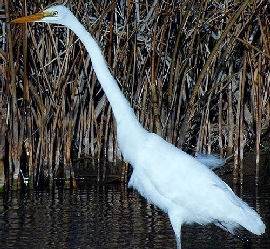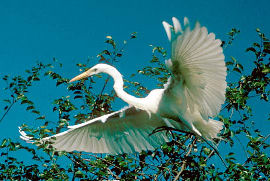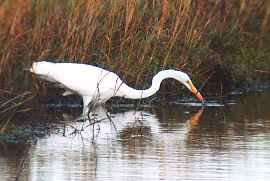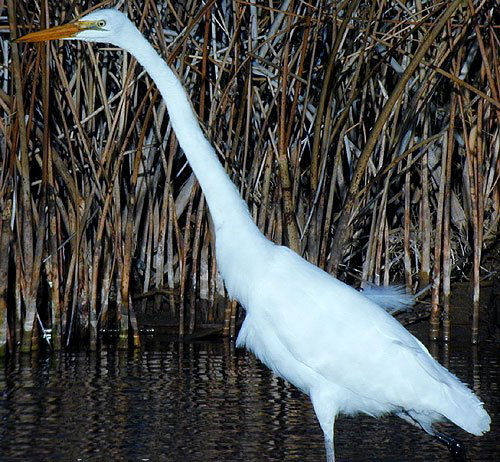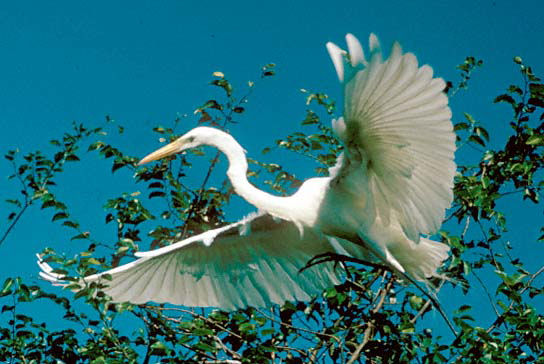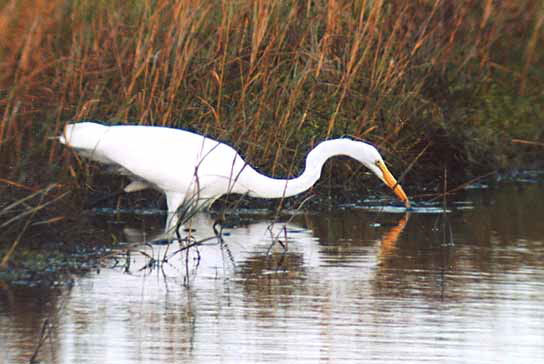Long-legged Waders
Description
35-41" (89-104 cm). W. 4'7" (1.4 m). A large, all-white heron with a yellow bill and black legs. In breeding plumage, has long lacy plumes on back. Much smaller Snowy Egret has black bill and legs and yellow feet. In southern Florida, white form of Great Blue Heron is similar but larger, with greenish-yellow legs.
Voice
A guttural croak. Also loud squawks at nesting colonies.
Discussion
Formerly known as the "American Egret," "Common Egret," "Large Egret," "White Egret," "Great White Egret," and "Great White Heron," this bird's official name in North America is now Great Egret. One of the most magnificent of our herons, it has fortunately recovered from historic persecution by plume hunters. But it is still not out of danger: The destruction of wetlands, especially in the West where colonies are few and widely scattered, poses a current threat to these majestic birds. Like the Great Blue Heron, it usually feeds alone, stalking fish, frogs, snakes, and crayfish in shallow water. Each summer many individuals, especially young ones, wander far north of the breeding grounds.

